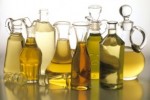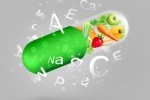Vitamin D is an important fat-soluble vitamin; it is also a hormone that is responsible for enhancing intestinal absorption of some minerals, such as Calcium, Iron, Magnesium, Phosphate and Zinc. Vitamin D can be found in fatty fish, but how many of us consume fatty fish every day? The good news is we don’t have to, because vitamin D can also be made by our skin if we are exposed to the sun. Low vitamin D levels are associated with risk of some types of cancer, cardiovascular disease, diabetes, inadequate immune system, asthma, allergies, and more. Recently there are more-and-more investigations on effects of maternal vitamin D status in babies. Earlier research suggests insufficient vitamin D in mothers could be associated with insulin resistance, low muscle mass and poor bone mineral accrual in their babies. Recent research is interested if there is an association between low vitamin D in mothers and obesity in babies.
Sarah Crozier and her team conducted a prospective cohort study. Women were followed during pregnancy, their serum vitamin D concentration was measured several times; additionally their babies’ health and fat mass was followed for several years after birth. A total of 12,583 women agreed to participate in this study. Of these, only 1973 women were entered to the study. Mother’s age ranged between 20 and 34 years old. Children’s vitamin D concentrations at age of 4 and 6 were analyzed. Additionally, their body compositions were analyzed using DXA scan. DXA scan is one of best techniques of measuring body and fat composition, because the x-ray waves measure different densities in the body, such as bone vs soft tissue. So, the fat could be measured precisely in this study.
All the mothers and 4-6 year old children were divided to 3 groups, 1st group are those who had vitamin D levels lower than 50 nmol/L, 2nd group- had 50-75nmol/L and the 3d group had 75 nmol/L and higher.
| Table 1: Serum 25-Hydroxyvitamin D [25(OH)D] Concentrations and Health | ||
| nmol/L** | ng/mL* | <spanalign=”center”>Health status |
|
<30 |
<12 |
Associated with vitamin D deficiency, leading to rickets in infants and children and osteomalacia in adults |
|
30–50 |
12–20 |
Generally considered inadequate for bone and overall health in healthy individuals |
|
≥50 |
≥20 |
Generally considered adequate for bone and overall health in healthy individuals |
|
>125 |
>50 |
Emerging evidence links potential adverse effects to such high levels, particularly >150 nmol/L (>60 ng/mL) |
* Serum concentrations of 25(OH)D are reported in both nanomoles per liter (nmol/L) and nanograms per milliliter (ng/mL). ** 1 nmol/L = 0.4 ng/mL
Researchers concluded there is a positive association between low maternal vitamin D levels in late pregnancy (34 weeks) and children high fat mass. It was observed that mothers with lower concentrations of vitamin D had infants with lower fat masses, but when their children were reassessed at ages 4 and 6 they kept higher amounts of fat, compare to the other 2 groups siblings. Additionally, there is an association between children’s insufficient vitamin D levels and high fat mass at ages 4 and 6, study suggests. Children with concentration of less than 50nmol/L of vitamin D had higher fat mass and it was observed to double by the time these kids reached 6 years.
The following table shows the amount of Vitamin D that should be consumed in order to keep serum concentration vitamin D of 50-75nmol/L.
| Table 2: Recommended Dietary Allowances (RDAs) for Vitamin D | ||||
| Age | Male | Female | Pregnancy | Lactation |
| 0–12 months* | 400 IU (10 mcg) |
400 IU (10 mcg) |
||
| 1–13 years | 600 IU (15 mcg) |
600 IU (15 mcg) |
||
| 14–18 years | 600 IU (15 mcg) |
600 IU (15 mcg) |
600 IU (15 mcg) |
600 IU (15 mcg) |
| 19–50 years | 600 IU (15 mcg) |
600 IU (15 mcg) |
600 IU (15 mcg) |
600 IU (15 mcg) |
| 51–70 years | 600 IU (15 mcg) |
600 IU (15 mcg) |
||
| >70 years | 800 IU (20 mcg) |
800 IU (20 mcg) |
||
* Adequate Intake (AI)
As was noted earlier, many fatty fish contain daily doses or more of vitamin D. But there are also other foods that could help you to increase vitamin D intake. Some vitamin D can be lost during cooking. To learn how much vitamin D is lost during different ways of cooking read “Is Vitamin D lost during cooking?”
Additionally, mushrooms can produce large amounts of vitamin D, read more about it “Sunshine or Mushrooms for Vitamin D?”
Table 3: Selected Food Sources of Vitamin D
| Food | IUs per serving* | Percent DV** |
| Cod liver oil, 1 tablespoon | 1,360 | 340 |
| Swordfish, cooked, 3 ounces | 566 | 142 |
| Salmon (sockeye), cooked, 3 ounces | 447 | 112 |
| Tuna fish, canned in water, drained, 3 ounces | 154 | 39 |
| Orange juice fortified with vitamin D, 1 cup (check product labels, as amount of added vitamin D varies) | 137 | 34 |
| Milk, nonfat, reduced fat, and whole, vitamin D-fortified, 1 cup | 115-124 | 29-31 |
| Yogurt, fortified with 20% of the DV for vitamin D, 6 ounces (more heavily fortified yogurts provide more of the DV) | 80 | 20 |
| Margarine, fortified, 1 tablespoon | 60 | 15 |
| Sardines, canned in oil, drained, 2 sardines | 46 | 12 |
| Liver, beef, cooked, 3 ounces | 42 | 11 |
| Egg, 1 large (vitamin D is found in yolk) | 41 | 10 |
| Ready-to-eat cereal, fortified with 10% of the DV for vitamin D, 0.75-1 cup (more heavily fortified cereals might provide more of the DV) | 40 | 10 |
| Cheese, Swiss, 1 ounce | 6 | 2 |
* IUs = International Units.
** DV = Daily Value. DVs were developed by the U.S. Food and Drug Administration to help consumers compare the nutrient contents among products within the context of a total daily diet. The DV for vitamin D is currently set at 400 IU for adults and children age 4 and older. Food labels, however, are not required to list vitamin D content unless a food has been fortified with this nutrient. Foods providing 20% or more of the DV are considered to be high sources of a nutrient, but foods providing lower percentages of the DV also contribute to a healthful diet.







